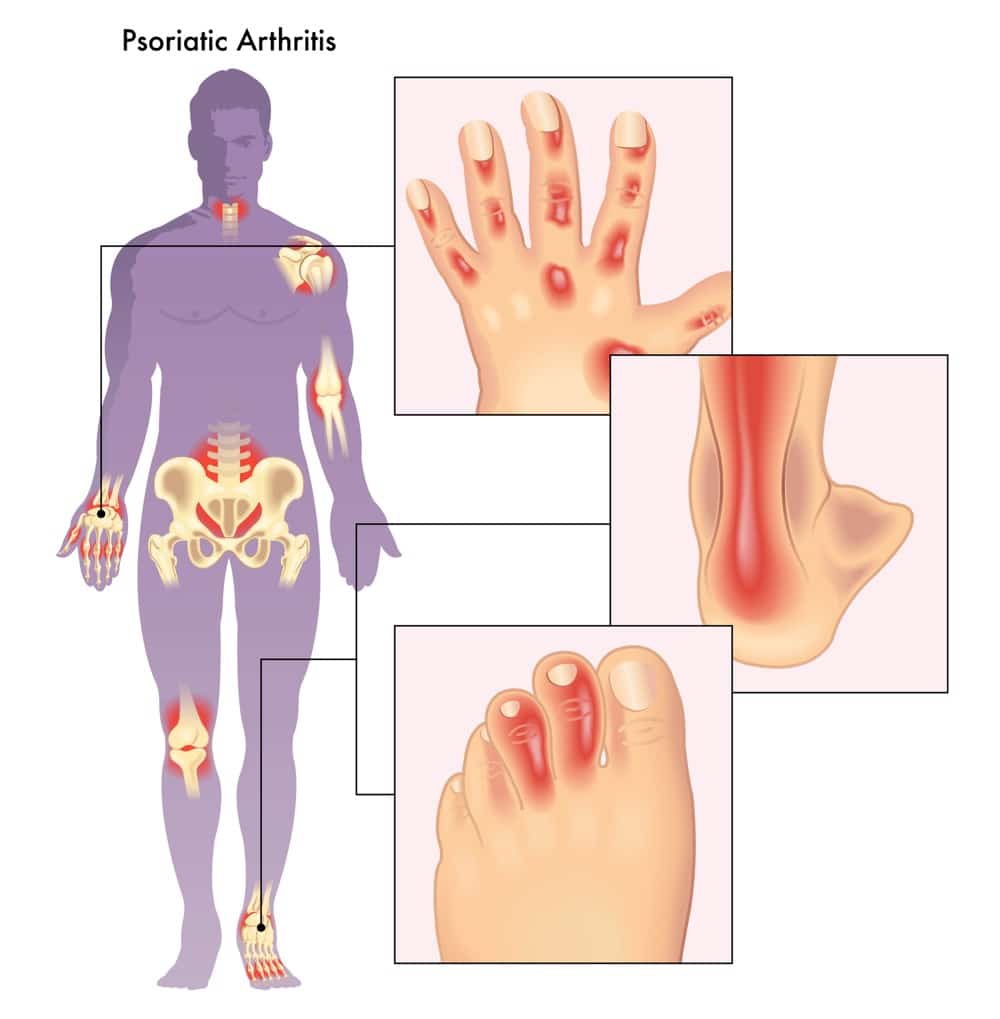Psoriasis and arthritis are thought to be separate health problems, and they apparently don’t have much in common. Psoriasis is a skin problem featuring reddened and scaly plaques in the trunk, scalp, knees, and elbows. Arthritis is a joint pain problem caused by inflammation in the affected articulations and is often associated with degenerative and progressive changes.
But in some cases, arthritis can be one of the manifestations in people with psoriasis. It is not a problem all people with psoriasis encounter, but when it happens, it is known as psoriatic arthritis.
This article reviews the most important data about psoriatic arthritis, including the basic concepts, signs and symptoms, causes, prognosis, and more.
What is psoriatic arthritis?

Psoriatic arthritis is a type of inflammatory disease in the articulations that occurs in patients with psoriasis. It is a chronic disease involving the articulations and the part of the tendon attached to the bone, known as entheses. It is classified as a seronegative oligoarthritis because the patients test negative for the rheumatoid factor in the blood and other arthritis markers, and it affects more than one joint but less than four.
In most cases, psoriasis starts years before the onset of arthritic symptoms. But in some cases, arthritis precedes psoriasis, and still, other patients have both problems simultaneously.
In any case, the diagnosis of psoriatic arthritis follows a list of classification criteria known as CASPAR, and even though there are no tests to diagnose the disease, patients usually need to evaluate their erythrocyte sedimentation rate, C-reactive protein, uric acid, and synovial fluid cell count to guide the management of the disease. Another valuable tool for the diagnosis is radiographic studies to detect the abnormalities characteristic of the disease.
These variations and the need for specialized exams to diagnose the disease are the reasons why psoriatic arthritis was first associated with psoriasis and distinguished from rheumatoid arthritis in the 1960s. Even now, defining psoriatic arthritis precisely can be difficult because there are no specific biologic tests.
